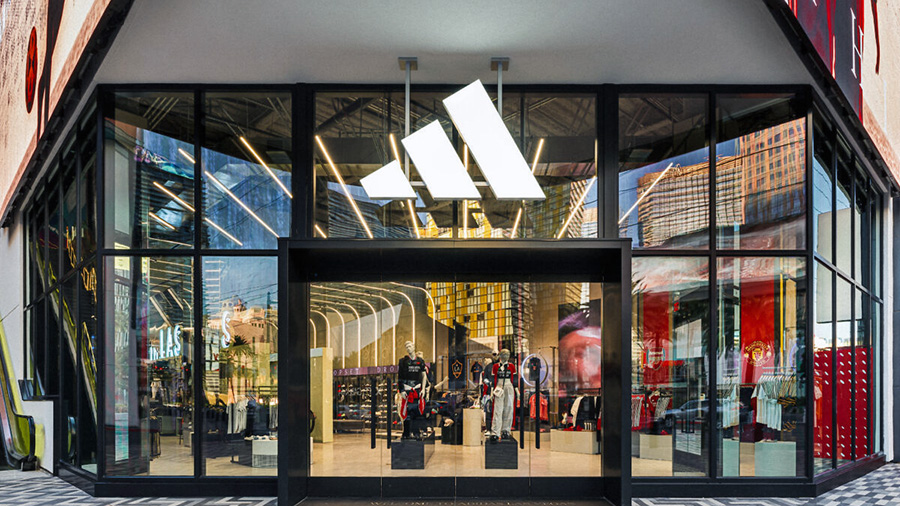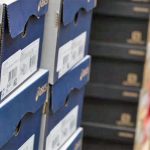On Adidas’ first-quarter analyst call, company CEO Bjørn Gulden said the company has not yet raised prices on U.S. products due to the U.S. tariffs but expects to do so should the tariffs remain and only after other brands raise prices.
“I have seen that certain press writes that Adidas is raising prices. That is, of course, not true,” said Gulden on the analyst call. “We said that should the duty stay, then there will be price increases in the U.S. market, and then we will not be the first one to move on prices. We would follow what the market leaders are doing. Should the duties go away again, there will, of course, not be price increases. But, I think we all agree that should these duties stay or even go higher, then, of course, it will cause a price increase in the market in general, not only in our category.”
Gulden made his remarks as Adidas delivered an above-plan first quarter from both a sales and earnings standpoint.
Gulden told analysts that without the tariff scenario, Adidas would have raised its full-year guidance for sales and earnings due to the “better-than-expected Q1, strong order book, and, as I hope, you also confirm the strong attitude towards our brand globally.”
However, given the direct impact of the current tariffs, the possibility that tariffs in other countries could surge following a 90-day pause by the Trump administration, and the “possible negative impact” on U.S. consumers from the tariff fallout, “we warn that there might be some negative pressure on this because we don’t really know.”
Adidas still confirmed its outlook for the year, hoping that momentum in other markets offsets margin and sales pressures possibly facing the U.S.
Gulden noted that 80 percent of Adidas’ business is in non-U.S. markets that are seeing no impact from the tariffs, with most seeing robust growth. He said, “We believe we can currently gain more momentum in the other markets. And, remember, the U.S. is only about 20 percent of our business, so we can finance the losses we’re doing on margin in the U.S. by overachieving in the other markets.”
Adidas reiterated its outlook for currency-neutral sales to increase at a high-single-digit rate in 2025, reflecting continued double-digit growth for the Adidas brand. Operating profit is projected to increase to between €1.7 billion and €1.8 billion from €1.34 billion in 2024, representing a gain of about 30 percent due to gross margin expansion and expense leverage.
The company’s outlook excludes contributions from the discontinued Yeezy range. In 2024, Yeezy contributed around €650 million in sales and about $200 million in profits.
Gulden said Adidas’ guidance assumes the current tariffs remain in place for the rest of the year.
Adidas showed a slide to analysts that following the move on April 11 by the Trump administration to hike tariffs on China by 125 percent, tariffs on U.S. imports of footwear from China are currently at 168 percent, while those on Apparel are 180 percent.
Other key countries Adidas sources from, including Vietnam and Indonesia, currently face the 10 percent across-the-line tariffs.
Gulden noted that Adidas had reduced its China exports to the U.S. to a minimum but remains “somewhat exposed” to China production. Since the Trump Administration implemented the tariffs, Adidas has rerouted more products Made in China for the U.S. market to other markets.
The bigger impact on the profitability of the U.S. business is the general increase in U.S. tariffs from all other countries of origin. Gulden said, “Since we currently cannot produce almost any of our products in the U.S., these higher tariffs will eventually cause higher costs for all our products for the U.S. market.”
Gulden further said that given the uncertainty around the negotiations between the U.S. and the different exporting countries, it’s unknown what the final tariffs will be. Before the 90-day pause, many countries outside of China faced significantly higher tariff rates, including Vietnam, at 47 percent, and Indonesia, at 32 percent.
Outside rerouting shipments from China, Adidas has not shifted production elsewhere due to the tariff threats. Gulden said, “Should the duties for the different markets, Indonesia, Vietnam, or wherever, be different, then, of course, we will start allocating product differently. But currently, we keep the plan.”
Gulden said China sources around 3 percent of footwear products and less than 2 percent of Apparel heading to the U.S., with those figures heading lower. In footwear, Vietnam and Indonesia account for about a third of products heading to the U.S., with “the rest spread around many, many markets,” said Gulden.
Apparel sourcing for Adidas heading to the U.S. is more diversified, with Vietnam making up about 15 percent, followed by Pakistan, Egypt and Indonesia at around 10 percent each, and several other countries, including Europe, also contributing.
An analyst asked about U.S. ordering patterns, given the tariff concerns, Gulden said there have been no cancellations thus far. “The U.S. order book is full for Q3, and it’s still going on for Q4,” said Gulden. He added that Adidas’ U.S. orders remain robust since the brand is experiencing strong demand.
“It’s business as usual so far,” Gulden added. “Regardless of what the retailers are nervous about, they will need a good-selling product, right? We think we are in this unique situation, and we now have good momentum in the U.S., meaning that they will need our product to sell. And, then, together with both the suppliers and the retailer, we then have to agree upon what are the prices and what are possible discounts will be if duties should then change or be confirmed.”
Gulden added that Adidas has no plans to raise prices outside the U.S. to offset the pricing pressures facing the U.S.
Gulden said, “There’s always a discussion about the right price level compared to heat, and you’re selling. There might be markets where you say you can take higher prices, but the tariffs do not initiate them. The discussion we’re having on the tariffs is only for the U.S.”
Elaborating on the pricing strategy for the U.S., Gulden said Adidas has no plans to be the “price leader” but much depends on whether tariffs on countries outside of China increase and the moves by Adidas’ competitors.
“We have said that we will not raise prices right now, but we will see what happens in the market,” said Gulden. “We do know that there are more dominant brands and more dependent on the U.S. market than we are. We also know that there are brands that are more dependent on China sourcing for the U.S. market than we are. So, we expect people to start to raise prices should these duties or other duties be confirmed, and that’s what we’re following. And we are then in a reactive mode, not an active one. I think that’s the only way of saying it.”
The first quarter showed Adidas has strong momentum across markets, with sales on a currency-neutral basis ahead 13 percent and up 17 percent, excluding the year-ago impact of Yeezy sales.
By region on a currency-neutral basis, sales were up 3 percent in North America but ahead 13 percent for the Adidas brand, excluding Yeezy. Europe was up 14 percent on a currency-neutral basis; Greater China, 13 percent; Japan/South Korea, 13 percent; Latin America, 26 percent; and Emerging Markets, 23 percent.
Yeezy sales – or lack thereof – mostly impacted the North American region.
By channel, Wholesale sales on a currency-neutral basis were up 18 percent, and Owned Retail sales grew 13 percent. E-commerce sales were down 3 percent due to year-ago Yeezy sales, but up 18 percent excluding Yeezy.
Footwear led the gains by category, up 17 percent on a currency-neutral basis, followed by Accessories, up 10 percent, and Apparel, ahead 8 percent.
Gulden said Adidas’ brand heat remains strong, with the Terrace trend helping make Adidas “the hottest brand for a while.”
The Samba, Gazelle, Handball Spezial, Campus, and SL 72 are scaling effectively. Gulden told analysts, “For those who think this is dangerous, don’t worry. The heat of these styles is being managed. And, of course, if you now go into the regional environment, you will see that we’re selling on a much wider scale than what we did about 12 months ago.”
The next major growth driver in footwear is expected to be low-profile, with lifestyle running also expected to be “very, very big.” The Superstar footwear model is also poised for strong growth, including the return of the Superstar roller skate.
Apparel has recovered after being impacted by a broad discounting in the marketplace in prior years. Gulden said Apparel is “doing extremely well with the pure players in the digital world, but it’s not so visible in brick-and-mortar.” He added, “That has started to change. And, I think it’s fair to say that in track tops and bottoms, in all kinds of materials and shapes, we are now very hot.”
In performance, Gulden said Adidas remains the “leader” in global football and remains “very, very optimistic” for growth, with the 2026 FIFA World Cup co-hosted by the U.S., Canada, and Mexico. He also said Adidas is making ‘huge progress” in running with numerous podium wins, including recently the London Marathon men and women winners. The company has also prioritized Basketball and Training in the performance categories.
Gulden said Adidas is exploring several scenarios to capitalize on brand demand and to lessen the impact of tariffs.
“Whatever happens, we believe that we have talented people and the resources to manage through uncertainty,” said Gulden.
Image courtesy Adidas/Las Vegas
See below for additional Adidas Q1 coverage from SGB Media, including category and region details:
















